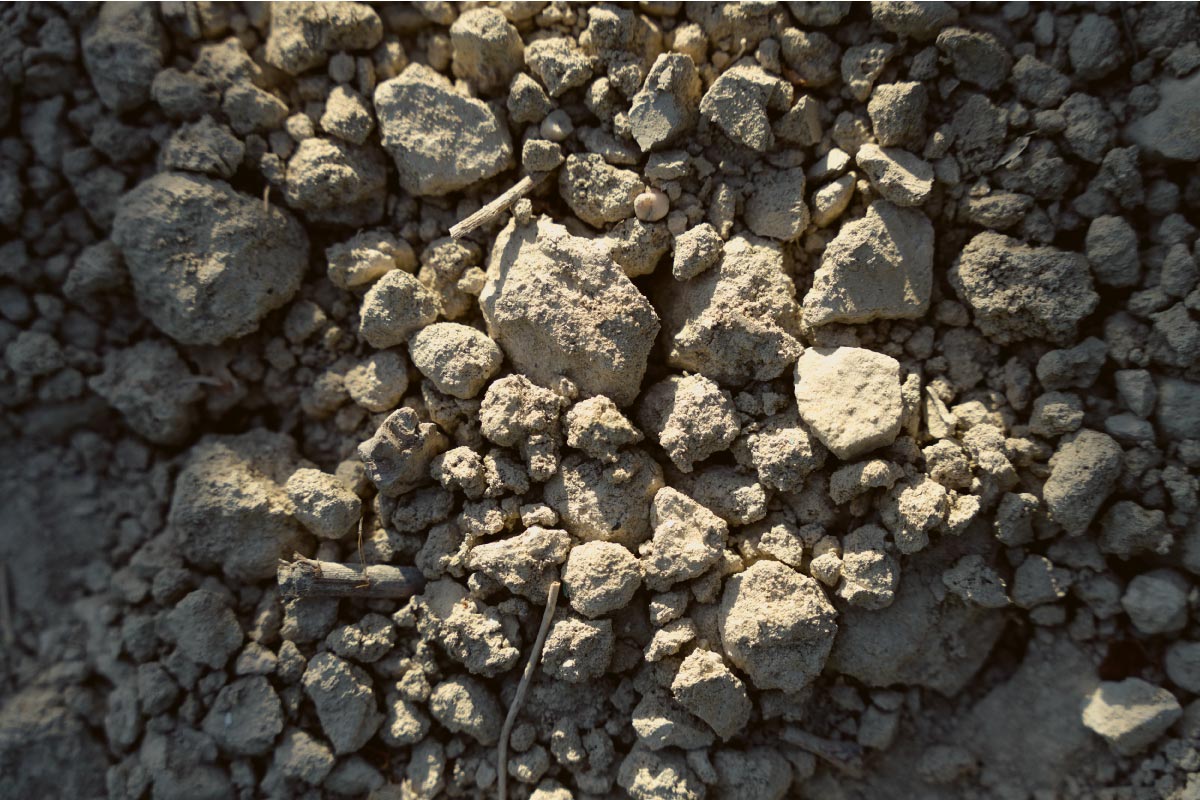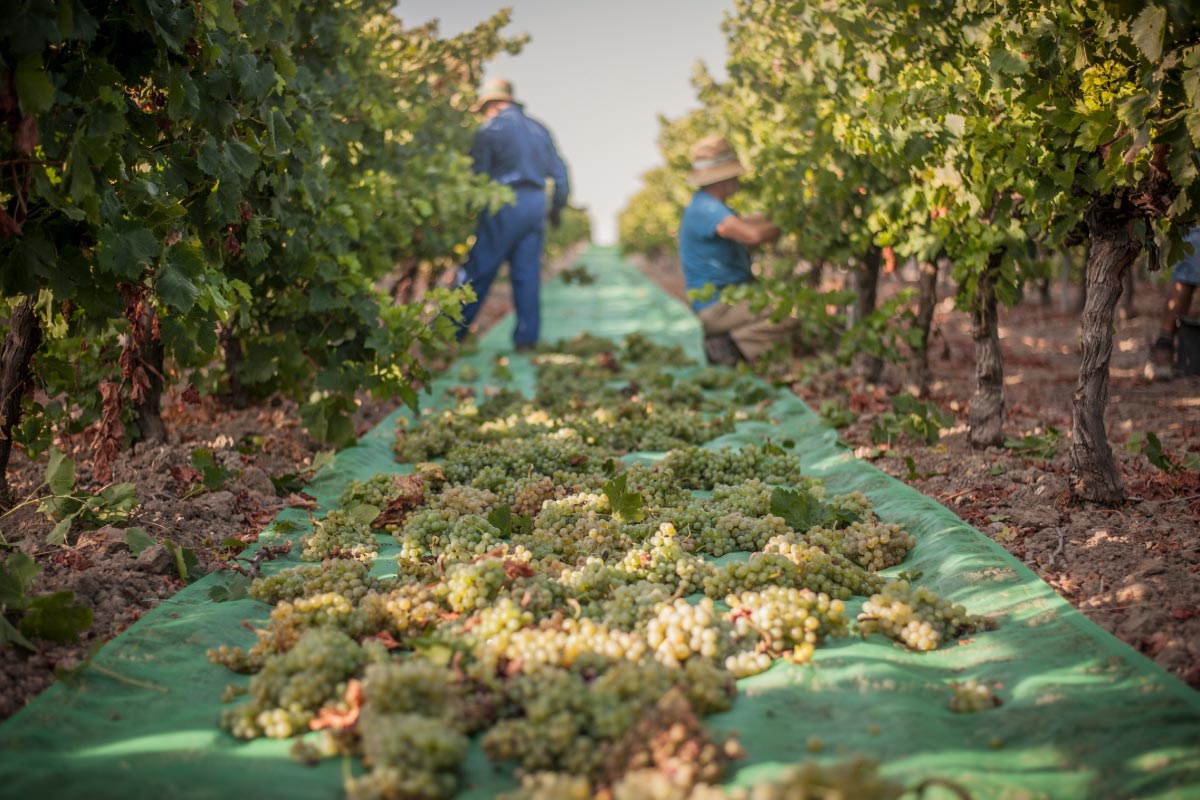“The Jerez region celebrates the end of a harvest in which just over 62.5 million kilos of grapes were collected, 25% more than last year, and of notable quality.” This was the opening paragraph of a local newspaper on September 17th. It continues with: “The results of this harvest made it possible to celebrate with special satisfaction the ‘Pisa de la Uva’ (grape stomping), a true emblem of the regional festivities. This is a tradition that dates back to 1948 and one of the oldest grape harvest festivals in Spain.” The rest of the year returned “grape production to the levels before the drought that has been severely affecting the vineyards of the Marco de Jerez since 2019.” Though, not all the grapes are destined for winemaking, around 5 million liters will go towards about 7 million bottles of Sherry Vinegar.

RAINFALL: BACK TO ‘NORMAL’ LEVELS.
In an interview with EFE, César Saldaña, president of the Regulatory Council of the Denominations of Origin Jerez-Xérès-Sherry, Manzanilla-Sanlúcar de Barrameda, and Vinagre de Jerez, affirms that it has been “a very positive year.” After seasons of very scarce rainfall, during which the area did not reach 350 liters per square meter (14 inches) annually (about half of the historical annual average in the region) this 2024, “it has rained quite a bit more, and, above all, it has rained very well, with generous rains in March that have been very beneficial.” This year more than 500 liters per square meter (20 in) have been reached, still below the usual annual average of over 600 (24 in), yet enough for the vineyards’ albariza soils to recover from four consecutive years of drought (compare this encouraging news with the challenging situation we reported last year here). Since the Denomination of Origin does not allow irrigation rain is especially important to these vines that grow in albariza soils “every drop of water is utilized” thanks to their “spectacular” moisture-retaining capacity.

RIPENING
The grapes have also had a “prolonged” maturation after a mild summer.These conditions have favored a very gradual ripening of the fruit, a greater weight of the clusters, and a slightly lower sugar content than usual ultimately reaching an average of 11.13º Baumé that gives the grapes “outstanding quality levels and balance, The typical diseases in the area have spared most of the vineyards this year, except for some outbreaks of powdery mildew in the coastal areas and a bit of ‘green mosquitos’ in the vineyards closest to the Guadalquivir, providing an “abundant healthy crop.”
“The grape harvest in the Jerez region is gradual as the grapes reach maturity. In the inland vineyards, it usually begins in early August, and in the coastal areas, with milder temperatures and more influence from the westerly winds, the ripening is slower and the harvest later,” Saldaña explains. 50% of the surface is harvested manually, and another 50% mechanically. These machines allow harvesting at night, ensuring the grapes arrive fresher at the wineries. This is convenient for the crushing and fermentation process of the musts. This freshness, though, is not necessary for the grapes destined for the region’s sweet wines, which are generally harvested by hand and subjected to the traditional ‘asoleos,‘ a technique in which the bunches are left exposed to the sun for a week so that the water from the fruit evaporates and the sugars and acids of the grapes become more concentrated.

REGION’S OVERALL RESULTS
Thirty-two facilities registered with the Regulatory Council received and processed grapes from 6,873 hectares of vineyards owned by almost 1,500 growers and more than 2,000 farms. The total production has risen to 62,571,050 kilos, representing a 25.39% increase compared to the amount collected in 2023, a return to average productions closer to what is usual in the area. “Since July 27th, the date when the first of the registered wineries began its activities, and throughout the entire harvest, the Regulatory Council has maintained the operation for the control of the grape collection and transport to ensure compliance with the regulations and, ultimately, to guarantee consumers the authenticity of the wines and vinegar protected by our denominations” concludes Saldaña.

At Lustau, the successful campaign has provided the following data:
• Harvest dates by grape variety:
-Palomino: Start 08/05/2024 – End 08/08/2024.
-Moscatel: Start 08/28/2024 – End 08/30/2024.
-Pedro Ximénez: Start 09/03/2024 – End 09/04/2024.
• Performance and health level:
-Palomino: Very healthy harvest. 11.25º Baumé. Excellent quality.
-Moscatel: Very healthy harvest. 13.8º Baumé. Excellent quality.
-Pedro Ximénez: Very healthy harvest. 22º Baumé. Excellent quality.
Lustau’s capataz Sergio Martínez says, “We have achieved an average increase of 50% across all varieties compared to 2023. The variety that has increased the most has been the moscatel, highlighting the importance of controlling the harvest dates.” To explain the significant climb in production, Martínez also underlines the continued efforts by his team of field workers: “I would highlight the good job done in the vineyard tasks, both in terms of fertilizers and appropriate viticultural practices to maintain, increase, and renew vines with the aim of improving our yields.”
Regarding the influence of this year’s climatic conditions, Martínez tells us: “Without a doubt, the main reason for the increase in production has been the overall very favorable weather during the campaign. The rains have not been abundant, but during Semana Santa (spring), about 125 liters/m2 (5 inches) of rainfall were recorded, which immensely helped the development of the vine. All this, combined with the fact that we had a summer where we barely experienced easterly (Levante) winds and didn’t suffer from heatwaves, rather cooler nights during June and July, led to a slower and more natural ripening of the vines, resulting in a very abundant and excellent quality harvest.”







